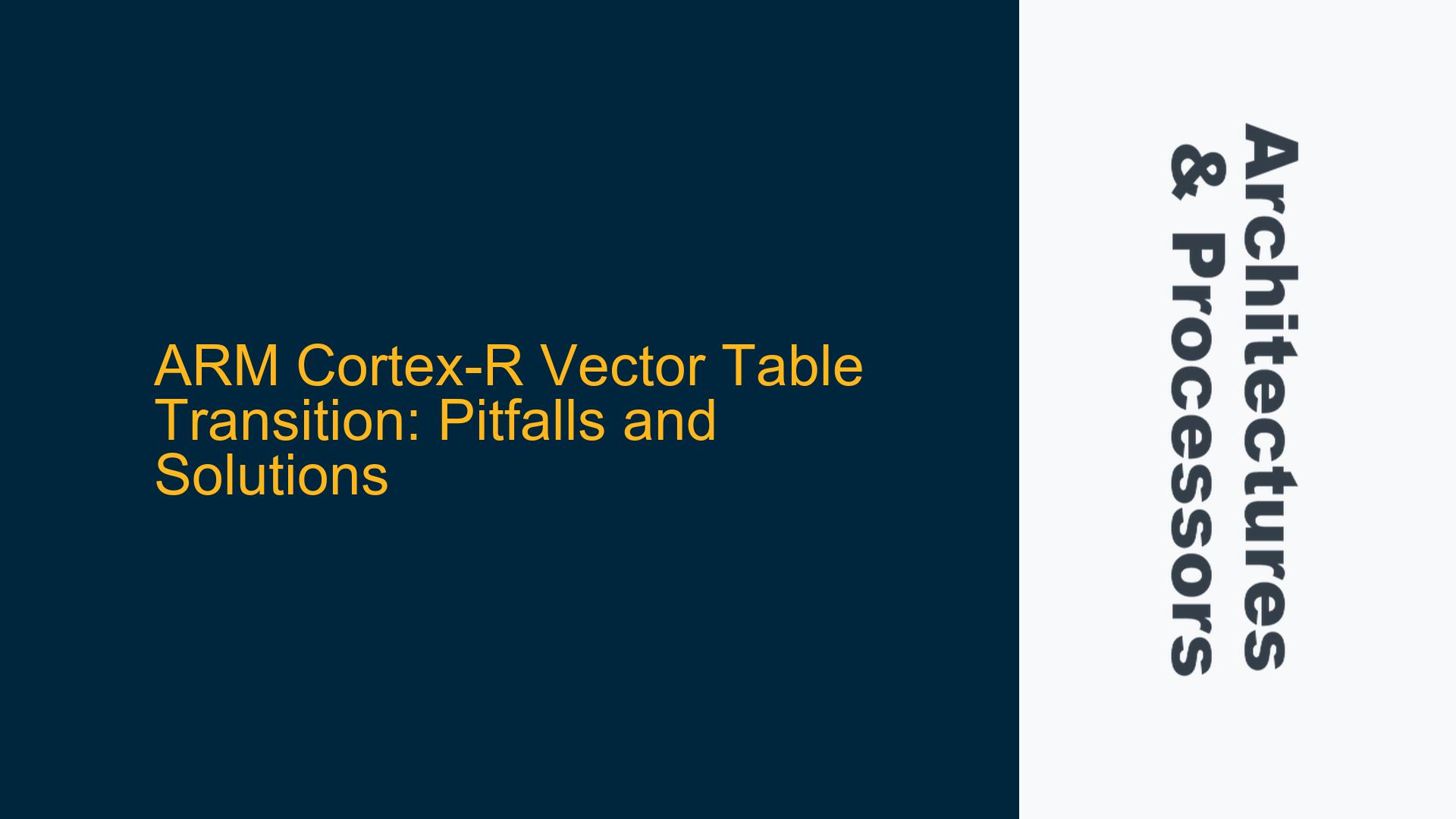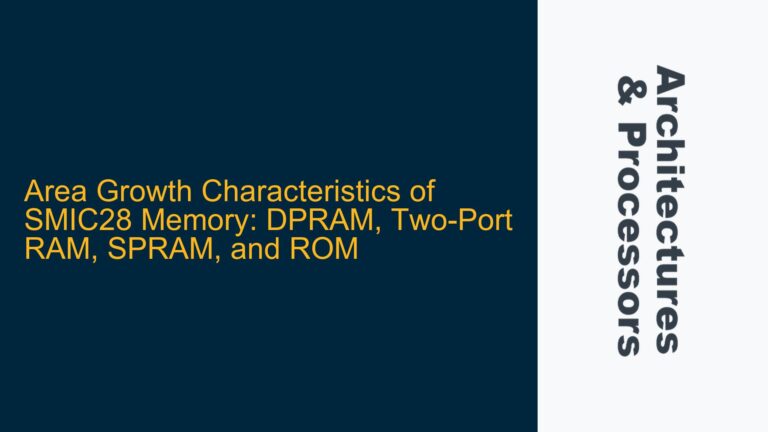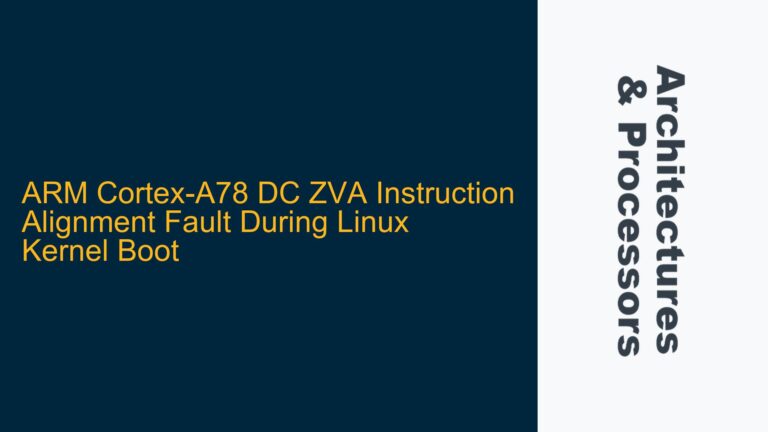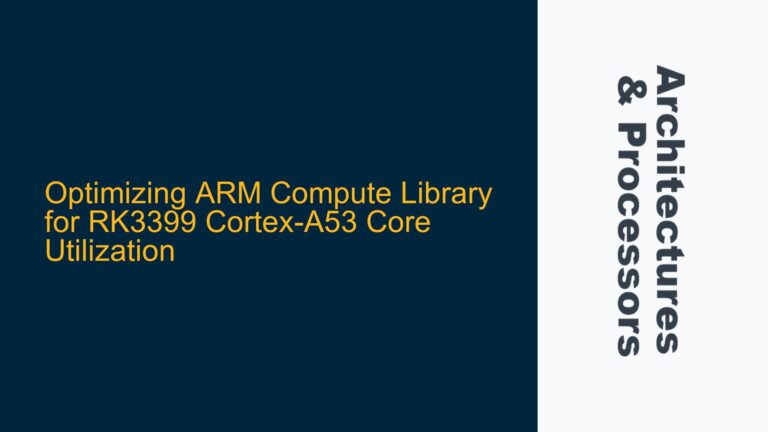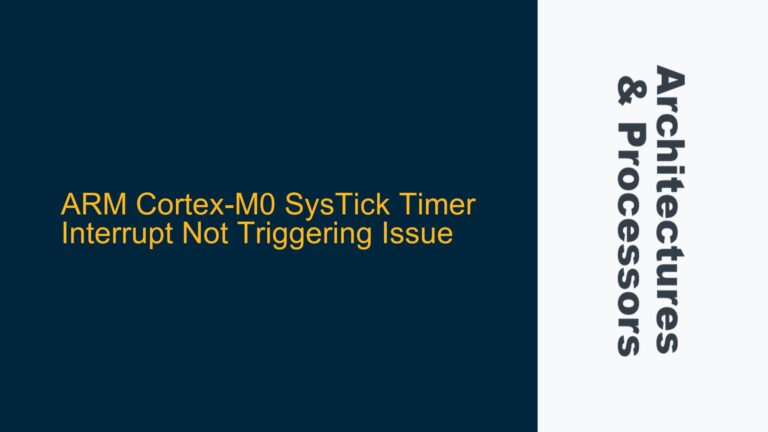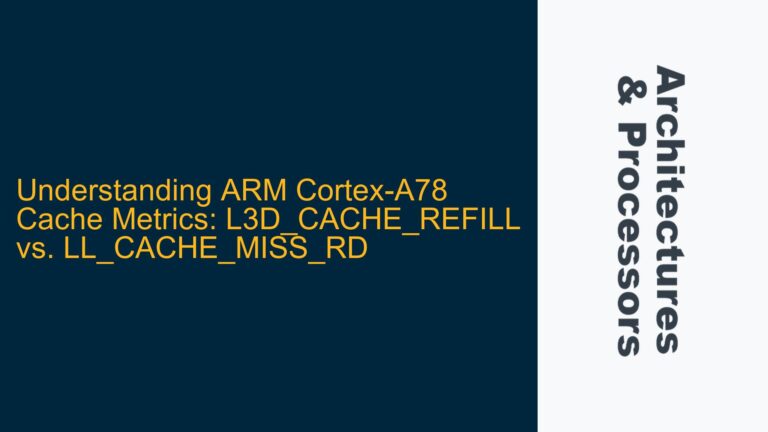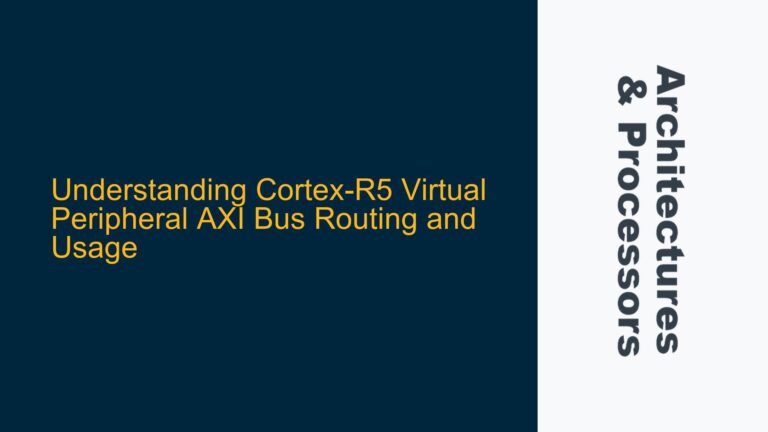ARM Cortex-R Vector Table Transition from High to Low Address
When working with ARM Cortex-R series processors, transitioning between vector tables located at different memory addresses (e.g., from high vectors at 0xFFFF0000 to low vectors at 0x00000000) is a critical operation that requires careful handling of system registers and memory barriers. The process involves modifying the VINITHI and SCTLR.V bits to switch the vector table base address, followed by a jump to the new reset handler. However, this sequence is not without potential pitfalls, particularly concerning the timing of register modifications and the state of the processor during the transition. Missteps can lead to undefined behavior, system crashes, or incorrect exception handling. This guide delves into the technical details of the transition process, identifies common pitfalls, and provides a robust solution to ensure a seamless switch between vector tables.
VINITHI and SCTLR.V Bit Configuration Timing
The ARM Cortex-R architecture provides two primary mechanisms for controlling the vector table base address: the VINITHI input signal and the SCTLR.V bit. The VINITHI signal determines the initial state of the SCTLR.V bit at reset, while the SCTLR.V bit dynamically controls the vector table base address during runtime. The VINITHI signal is a hardware tie-off that sets the default vector table location (high or low) at reset, whereas the SCTLR.V bit is software-configurable and allows runtime switching between high and low vector tables.
The SCTLR.V bit has two possible states:
- 0: Normal exception vectors, with the base address at 0x00000000.
- 1: High exception vectors, with the base address at 0xFFFF0000.
The transition from high to low vectors involves the following steps:
- Modify VINITHI to indicate low vectors (0x00000000).
- Clear the SCTLR.V bit to switch the vector table base address.
- Jump to the reset handler of the new vector table.
However, the timing of these steps is critical. If the SCTLR.V bit is cleared before the jump to the new reset handler, the processor may attempt to fetch exception vectors from the wrong address during the transition, leading to undefined behavior. Conversely, if the SCTLR.V bit is cleared after the jump, the processor may continue using the high vector table, defeating the purpose of the transition.
Potential Pitfalls in Vector Table Transition
The primary pitfall in this process is the improper sequencing of register modifications and the jump to the new reset handler. Specifically, the following issues can arise:
-
Race Conditions During Exception Handling: If an exception occurs between the modification of the SCTLR.V bit and the jump to the new reset handler, the processor may attempt to fetch exception vectors from the wrong address. This can result in incorrect exception handling or a system crash.
-
Cache and Memory Coherency Issues: The ARM Cortex-R series processors often include caches and memory management units (MMUs) that must be synchronized during the vector table transition. Failure to invalidate caches or flush write buffers can result in stale data being used for exception handling.
-
Interrupt Latency and Masking: If interrupts are not properly masked during the transition, an interrupt may trigger before the new vector table is fully operational, leading to incorrect interrupt handling.
-
Register State Corruption: The processor’s internal state, including general-purpose registers and program counter, must be preserved during the transition. Improper handling of the jump instruction can corrupt the register state, leading to unpredictable behavior.
-
Hardware-Specific Constraints: Some ARM Cortex-R implementations may have additional hardware-specific constraints or errata that affect the vector table transition process. These constraints must be carefully considered to ensure a robust implementation.
Implementing a Robust Vector Table Transition
To address the potential pitfalls and ensure a seamless transition between vector tables, the following steps should be implemented:
-
Disable Interrupts: Before modifying the SCTLR.V bit, disable all interrupts to prevent race conditions during the transition. This can be achieved by setting the CPSR.I and CPSR.F bits in the Current Program Status Register (CPSR).
-
Modify VINITHI and SCTLR.V: Update the VINITHI signal to indicate the new vector table location (low vectors at 0x00000000). Then, clear the SCTLR.V bit to switch the vector table base address. Ensure that these modifications are performed atomically or with appropriate memory barriers to prevent reordering.
-
Invalidate Caches and Flush Write Buffers: Use the Data Synchronization Barrier (DSB) and Instruction Synchronization Barrier (ISB) instructions to ensure that all cache and memory operations are completed before proceeding with the transition. This prevents stale data from being used for exception handling.
-
Jump to the New Reset Handler: Perform a direct jump to the reset handler of the new vector table. Ensure that the jump instruction is executed immediately after the SCTLR.V bit is cleared to minimize the window of vulnerability.
-
Re-enable Interrupts: Once the new vector table is operational, re-enable interrupts by clearing the CPSR.I and CPSR.F bits.
The following code snippet demonstrates the recommended sequence:
; Disable interrupts
CPSID i
CPSID f
; Modify VINITHI to indicate low vectors
LDR r0, =VINITHI_ADDRESS
MOV r1, #0
STR r1, [r0]
; Clear SCTLR.V bit
MRC p15, 0, r0, c1, c0, 0 ; Read SCTLR
BIC r0, r0, #(1 << 13) ; Clear V bit
MCR p15, 0, r0, c1, c0, 0 ; Write SCTLR
; Invalidate caches and flush write buffers
DSB
ISB
; Jump to the new reset handler
LDR r0, =NEW_RESET_HANDLER_ADDRESS
BX r0
; Re-enable interrupts (not reached in this example)
CPSIE i
CPSIE f
By following this sequence, the vector table transition is performed safely and efficiently, minimizing the risk of race conditions, cache coherency issues, and other potential pitfalls. This approach ensures that the processor consistently fetches exception vectors from the correct address, even in the presence of interrupts or other exceptions.
In conclusion, transitioning between vector tables in ARM Cortex-R processors requires careful attention to the timing of register modifications, cache coherency, and interrupt handling. By understanding the roles of the VINITHI signal and SCTLR.V bit, and by implementing the recommended sequence of operations, developers can achieve a robust and reliable vector table transition. This ensures that the processor operates correctly in all scenarios, providing a solid foundation for embedded systems development.
